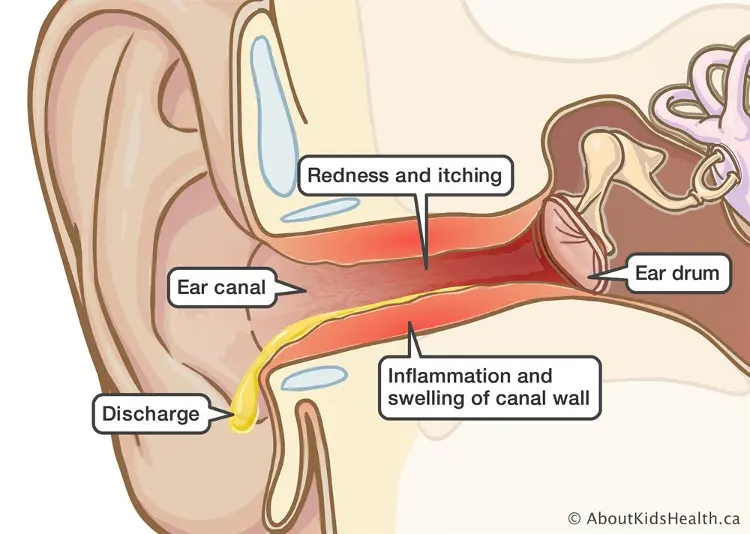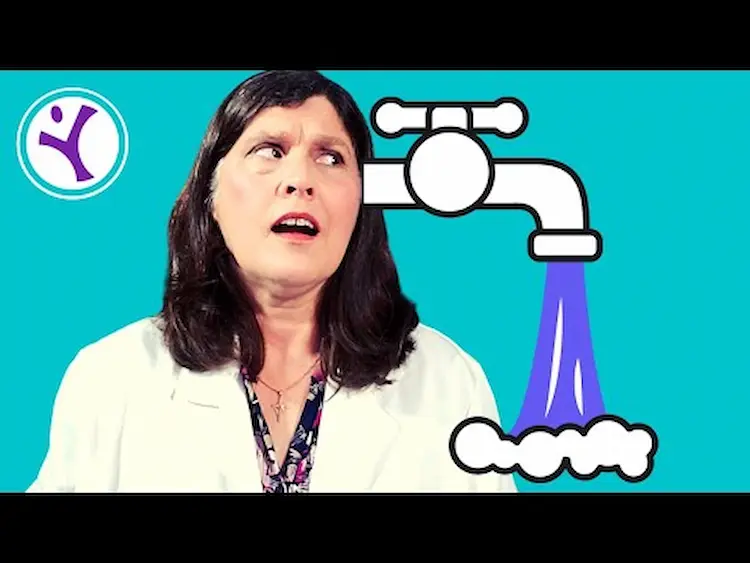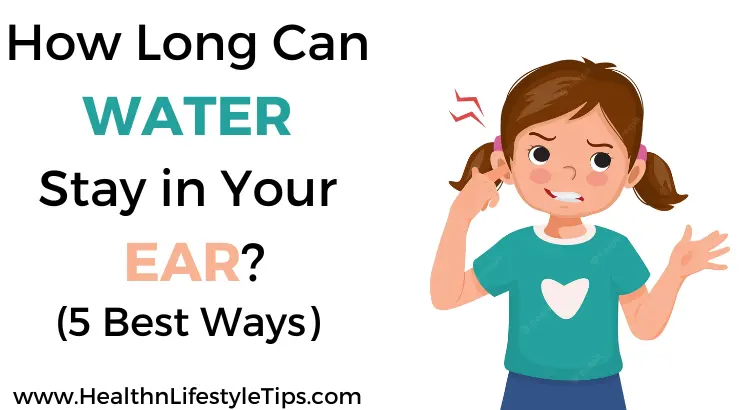Water can stay in your ear for a period of a few hours up to a couple of days. The quantity and consistency of earwax produced by a certain person are also important. The issue is also based on the pattern and quantity of water in your ear.
The water usually keeps flowing without any intervention. Otherwise, the water can cause an infection in the ear canal. Swimmer’s ear is an infection of the external auditory canal of the outer ear.
How Does Water Trap in The Ear?
It doesn’t matter how old you are, swimming and enjoying in the water is a lot of fun – however, it can result in water getting trapped in your ear. If this happens, you can have fullness in your ear canal or a sensation, not unlike a tickling, that water is swishing about in your ear.
Either ear can be affected, or neither. You may also experience pain in your jaw or throat and have difficulty or distorted hearing in addition to the aforementioned signs and symptoms.
In most cases, a slight tilt of the head is all that’s needed to release the water. Otitis externa, more often known as swimmer’s ear, is an ear infection that can develop if the water stays in the ear canal for several days.

Other Features
A swimmer’s ear is typically brought on by swimming in dirty water.
The following are some additional possibilities:
- Located in hot and sticky climates
- Scratching or cleaning one’s ear canal with fingers, cotton swabs, or other materials
- When the ear canal is damaged, you may have hearing loss.
- Troubles with skin dryness in the ear canal
- Getting an object in the inner ear
- Experiencing an increase in earwax production
How to Know if There is Water in my Ear?
Distorted sound and the sensation that something is striking your eardrum are the most prevalent symptoms of water in the ear. It’s possible, though, that the distorted audio is a symptom of anything else. Other signs of water in the ear include:
- Scratching sound in the ear
- Irritation of the ear canal
- An ache around the periphery of your ears
- Clear discharge from the eye socket
Most of the above signs and symptoms will become apparent as time progresses, helping you to determine that water is trapped in your ear.
There is no risk to your life when water gets trapped in the ear for some days. Still, you should consider it to avoid further complications.
Ways for Extracting Water from The Ear
Having water trapped in your ear canal might lead to an infection due to the growth of bacteria that is already there.
However, you must safely evacuate the water. Any mistaken action can lead you to face the issue named swimmer’s ear. It’s important to take extra precautions when drying your ears if you have a damaged eardrum or tubes.
Five Safe Ways for Getting Water out of Your Ears

Here’s how to securely remove water from your ears.
- Turn Your Head: Simply lean to one side and position yourself so that your affected ear is pointing downward.
- Hold this position for several minutes to allow any water in your ear to drain down and out of your ear canal. If water drips outside your ear, dry it with a clean, soft washcloth.
- Shake your earlobe: Tilt your head down toward your shoulder and gently twist or tug at your earlobe. You can also sway your head from side to side while in this position.
- The Hairdryer Method: If water is blocking your ear canal, you might try using a hair dryer to blow it out. Keep the hair dryer at a distance of about 12 inches from your ear and move it back and forth. Pull on your ear lobe and let the warmth evaporate the moisture in your ear.
- Olive oil: Put a few drops of warm olive oil in the afflicted ear, rest on your side for ten or so minutes, then sit up and tilt your head back to drain the fluid.
Don’ts for Getting Water Out of Your Ears
Water in the ear can be removed by following some standard procedures.
You shouldn’t do the following things:
- Inserting foreign things, like cotton swabs, paperclips, or bobby pins, into one’s ear canal
- A practice consisting of inserting fingernails or fingers into ears
- Proximity to the ear canal by loud objects such as a blow dryer or a fan, which can force air into the ear and potentially cause damage to the ear’s delicate structures, is not recommended.
If you already have an ear infection, a punctured eardrum, or ear tubes, you shouldn’t use one of the two treatments that involve putting drops in your ear.
FAQs on How Long Can Water Stay in Your Ear
-
Is it bad if the water stays in the ear for too long?
Infections including swimmer’s ear, surfer’s ear, and otitis external can lead to permanent hearing loss if they are not treated promptly once they are contracted.
-
Why is there a blockage in my ear?
Clogged ears are most commonly caused by: much earwax. Microfracture of the ear caused by a clogged Eustachian tube. Allergies, a cold, or a sinus infection.
-
How do I remove the earplugs?
You can unblock your ears by eating, yawning, or chewing sugar-free gum. If it doesn’t help, try squeezing your nostrils closed and blowing softly out of your nose while holding your breath
Conclusion on How Long Can Water Stay in Your Ear
Most of the time, trapped water may be released naturally without any intervention.
If your symptoms have persisted for more than three days if you have had pain if the over-the-counter remedies have not helped, and if you suspect that you have an ear infection, you should make an appointment with your medical professional.
